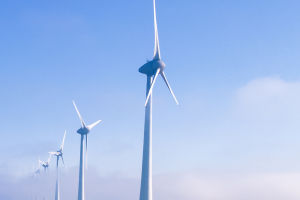Animal agriculture, which includes raising livestock for meat, dairy, and eggs, has a significant impact on global greenhouse gas emissions and the environment.
According to a report by the Food and Agriculture Organization (FAO) of the United Nations, the livestock sector is responsible for approximately 18% of global greenhouse gas emissions, primarily from the production of methane and nitrous oxide.
This is more than the emissions from the transportation sector.
Methane is a potent greenhouse gas with a global warming potential 28 times greater than carbon dioxide over a 100-year time frame. It is primarily produced during the digestive process of ruminant animals such as cattle, sheep, and goats.
Nitrous oxide is a powerful greenhouse gas with a global warming potential 265 times greater than carbon dioxide over a 100-year time frame. It is mainly emitted from manure management, the use of synthetic fertilizers in animal feed production, and the cultivation of animal feed crops.
The livestock industry has become increasingly intensive in recent decades, with more animals being raised in factory farms, also known as concentrated animal feeding operations (CAFOs).
These facilities house thousands of animals in close confinement, leading to high concentrations of animal waste. The United States, in particular, has the highest methane emissions from animal agriculture in the world, with an estimated 1.9 million tons of methane emissions annually.
In addition to greenhouse gas emissions, animal agriculture has other negative environmental impacts. Animal feed production consumes substantial quantities of water, land, and energy, with agriculture accounting for around 70% of global freshwater withdrawals, a considerable portion of which is allocated for animal feed.
Animal agriculture also contributes to deforestation, as forests are cleared to make way for pastureland and to grow crops for animal feed. The loss of forests due to animal agriculture is responsible for approximately 2.4 billion tons of carbon dioxide emissions per year.
Moreover, animal agriculture is a major contributor to water pollution. Animal waste, which is often stored in large lagoons or pits, can leach into nearby waterways and contaminate them with nutrients and pathogens.
This can lead to the growth of harmful algal blooms and dead zones, which have negative impacts on aquatic ecosystems and the fishing industry.
To mitigate the environmental impacts of animal agriculture, there is a need for a range of policies, incentives, and practices that promote sustainable and humane practices. These include improving the efficiency of the livestock production sector, reducing greenhouse gas emissions, and protecting water and land resources.
The FAO recommends a "life cycle" approach that identifies emissions hotspots in the livestock supply chain and promotes context-specific actions to reduce emissions.
One way to reduce the environmental impact of animal agriculture is to shift towards plant-based diets.
A report by the EAT-Lancet Commission recommends that global consumption of red meat be reduced by 50% and that a flexitarian diet, which includes more plant-based foods and fewer animal products, be adopted.
This can not only reduce greenhouse gas emissions but also improve public health by reducing the incidence of diet-related chronic diseases.
Another solution is to promote sustainable and regenerative agricultural practices, such as rotational grazing and agroforestry, which can help sequester carbon in the soil and reduce the need for synthetic fertilizers.
Sustainable livestock production can also improve animal welfare, support rural livelihoods, and enhance biodiversity.
The impact of animal agriculture on climate change and the environment cannot be ignored. To mitigate the negative effects of this industry, there is a need for a range of policies and practices that promote sustainable and humane practices.
This includes a shift towards plant-based diets, sustainable agricultural practices, and improved efficiency in the livestock production sector.


